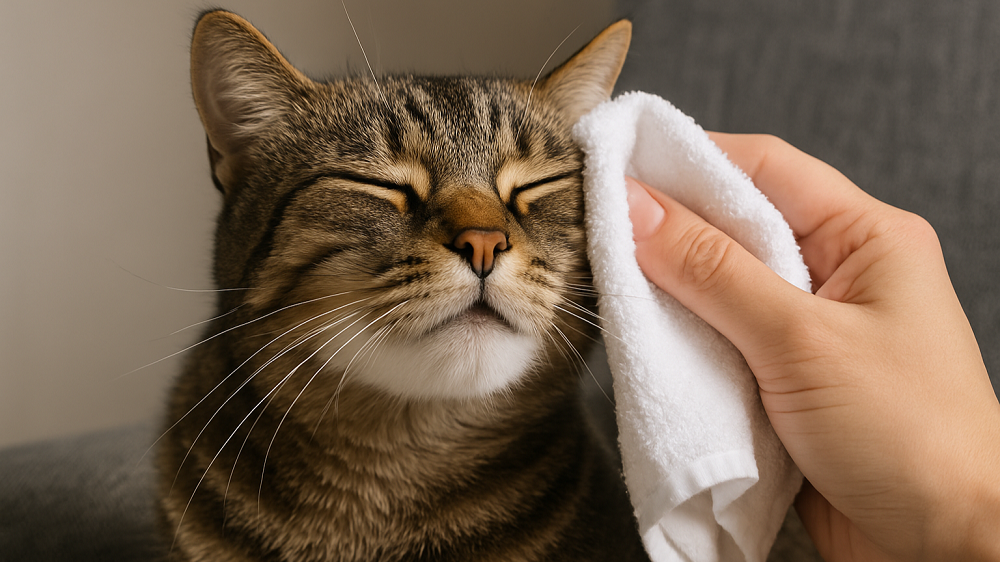How to Live Comfortably with Cat Allergies
For millions of cat lovers, allergies can feel like a cruel joke. You adore your cat, but your immune system acts like it’s under siege every time you snuggle. The good news? Modern cat allergy treatment options have come a long way. You don’t have to choose between your health and your whiskered roommate. With a bit of science, strategy, and vacuuming, you can breathe easier and keep the cat.
Understanding Cat Allergies
Let’s start with what’s actually causing the problem. Spoiler: it’s not the fur. The real culprit is a protein called Fel d 1, which is found in a cat’s saliva, skin, and urine. When cats groom themselves, that protein transfers to their fur and skin, where it dries and becomes airborne. That’s what we all know as cat dander.
When someone allergic to cats breathes in or touches this protein, their immune system overreacts, triggering a cascade of allergy symptoms like:
- Sneezing
- Itchy, watery eyes
- Nasal congestion or runny nose
- Coughing or wheezing
- Skin rashes or hives
- In some cases, asthma attacks
These reactions can vary from mild to severe, and unfortunately, even hairless breeds produce Fel d 1.
Cat Allergy Treatment: The Full Arsenal
There’s no magic bullet for eliminating cat allergies altogether, but a layered approach works best. That means combining environmental control, medical treatment, and a few key lifestyle shifts.
1. Environmental Management
Reducing your exposure to Fel d 1 is the single most important thing you can do. That starts at home.
Make your bedroom a cat-free zone.
You spend a third of your life sleeping. Keeping this space allergen-free gives your body time to recover daily.
Use HEPA filters in your home.
High-efficiency particulate air filters trap airborne allergens. Use them in vacuum cleaners and standalone air purifiers. If you have central air, install high-quality filters and replace them regularly.
Vacuum and clean frequently.
Vacuum carpets, furniture, and drapes at least twice a week. Wash bedding (yours and your cat’s) often. Wipe down walls and surfaces with a damp cloth to trap allergens rather than spread them.
Choose hard floors over carpet.
If you’re renovating or choosing a home, opt for wood, tile, or vinyl flooring. Carpets trap allergens and are difficult to clean completely.
Bathe or wipe down your cat regularly.
While many cats won’t tolerate full baths, even wiping them with a damp cloth or using a vet-approved allergen-reducing wipe can help control dander.
2. Medical Treatment Options
Over-the-counter and prescription medications are essential tools in cat allergy treatment. Work with your allergist to build a regimen that fits your needs.
Antihistamines
Medications like cetirizine, loratadine, or fexofenadine block histamine, a chemical that causes inflammation and sneezing. They’re effective for mild to moderate symptoms.
Nasal corticosteroids
Sprays like fluticasone or mometasone reduce nasal inflammation and are excellent for persistent symptoms.
Decongestants
Short-term use of nasal or oral decongestants can help relieve congestion, but they’re not for long-term daily use.
Eye drops
Antihistamine or mast-cell-stabilizing drops can help control itchy, watery eyes.
Asthma medications
If you have allergic asthma, your doctor may prescribe inhalers or long-term control medications to prevent serious reactions.
Allergy shots (immunotherapy)
This long-term treatment gradually exposes your immune system to the allergen in small, controlled doses. It can reduce symptoms over time or eliminate them completely for some people. This is the only treatment with the potential to reprogram your immune response to cat allergens.
Can You Live with a Cat if You’re Allergic?
Yes, but it takes commitment. Many people successfully live with cats despite having allergies, but the balance comes from being consistent with cat allergy treatment and minimizing contact with allergens.
Here’s how to make it work:
- Keep your cat off beds and furniture, even if they give you the “I thought we were friends” look.
- Wash your hands after petting your cat and avoid touching your face.
- Use clothes and linens that can be easily washed. Avoid heavy fabrics that trap allergens.
- If possible, designate one person in the home as the main caregiver for feeding and litter duties.
- Get serious about cleaning. Set reminders. Make it routine.
This isn’t about loving your cat less. It’s about loving them while preserving your health.
Do Cat Allergies Get Worse Over Time?
They can. In some cases, prolonged exposure to cat allergens can cause worsening symptoms. This is especially true for individuals who don’t take active steps to manage their allergy or who have asthma. Symptoms that start as mild irritation may progress into:
- Chronic sinus inflammation
- Increased asthma attacks
- Persistent fatigue from poor sleep
- Heightened sensitivity to other allergens
However, some people report that their symptoms actually improve with regular exposure. This is known as desensitization, and while it happens naturally for a few lucky individuals, it’s more reliably achieved through medical immunotherapy.
Can You Build Immunity to Cat Allergies?
Let’s be clear: there is no “natural immunity” that you can build just by toughing it out. In fact, repeated exposure without a treatment plan can make things worse. But with medical help, your body can gradually learn to tolerate cat allergens.
Immunotherapy (allergy shots or drops) is the most effective way to build long-term tolerance. This process involves:
- Regular exposure to tiny amounts of Fel d 1
- Gradual increases over months or years
- A shift in your immune response that reduces or eliminates symptoms
This treatment can be life-changing for people who love cats and want to live with them comfortably.
For a more casual approach (not medically proven, but reported anecdotally), some people try:
- Spending short, controlled periods near their cat and slowly increasing exposure
- Wearing a mask and gloves while cleaning
- Increasing ventilation and using HEPA filters to lower ambient allergen levels
None of these will “cure” an allergy, but they can help reduce day-to-day reactivity and give your immune system a break.
Final Thoughts
Managing a cat allergy doesn’t have to mean rehoming your pet or spending life in a bubble. With the right cat allergy treatment plan, consistent cleaning, and a few lifestyle changes, you can dramatically reduce your symptoms and keep your feline family member right where they belong.
From antihistamines and HEPA filters to cutting-edge immunotherapy, there are more tools available today than ever before. So whether you’re sneezing your way through kitten season or just trying to get through a cuddle session without tearing up (in the allergic sense), remember, relief is possible, and you don’t have to choose between your cat and your comfort.
Cats may shed dander, but they also shed love, companionship, and just enough attitude to keep life interesting. That’s worth fighting for, and now, you’ve got a full game plan to do it.
Sources:
The Ohio State University: Allergic to your cat? Easy tips to prevent and control your allergy
American College of Allergy Asthma and Immunology: Dog and Cat Allergies | Symptoms & Treatment
Mayo Clinic: Pet allergy – Diagnosis & treatment
Recent Posts
Your Cat Might Be a Furry Little Healer… or at Least a Fuzzy Alarm System If you’ve ever had your cat suddenly become extra clingy when you’re under the weather, you’re not alone. From...
Cats are experts at hiding things, socks under furniture, their disdain for your playlist, and, unfortunately, symptoms of illness. In the wild, showing weakness could make them a target, so even...


